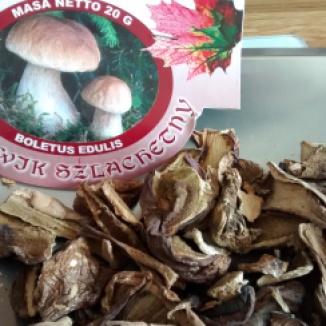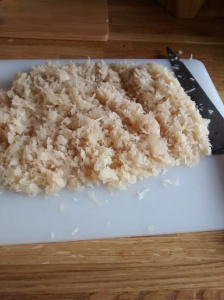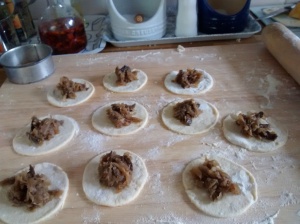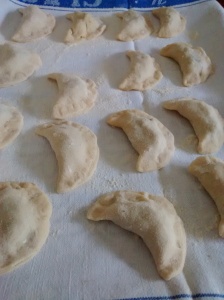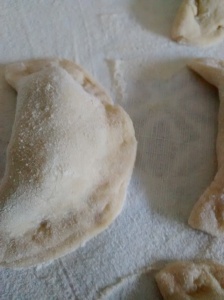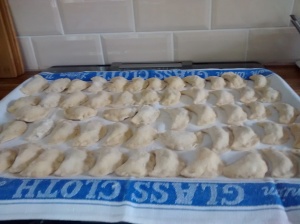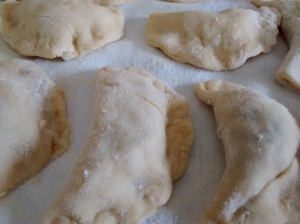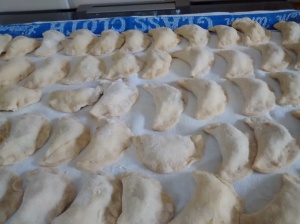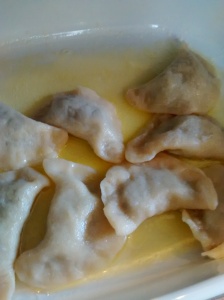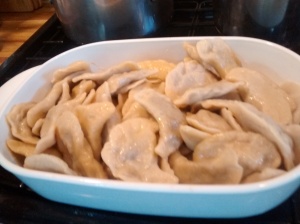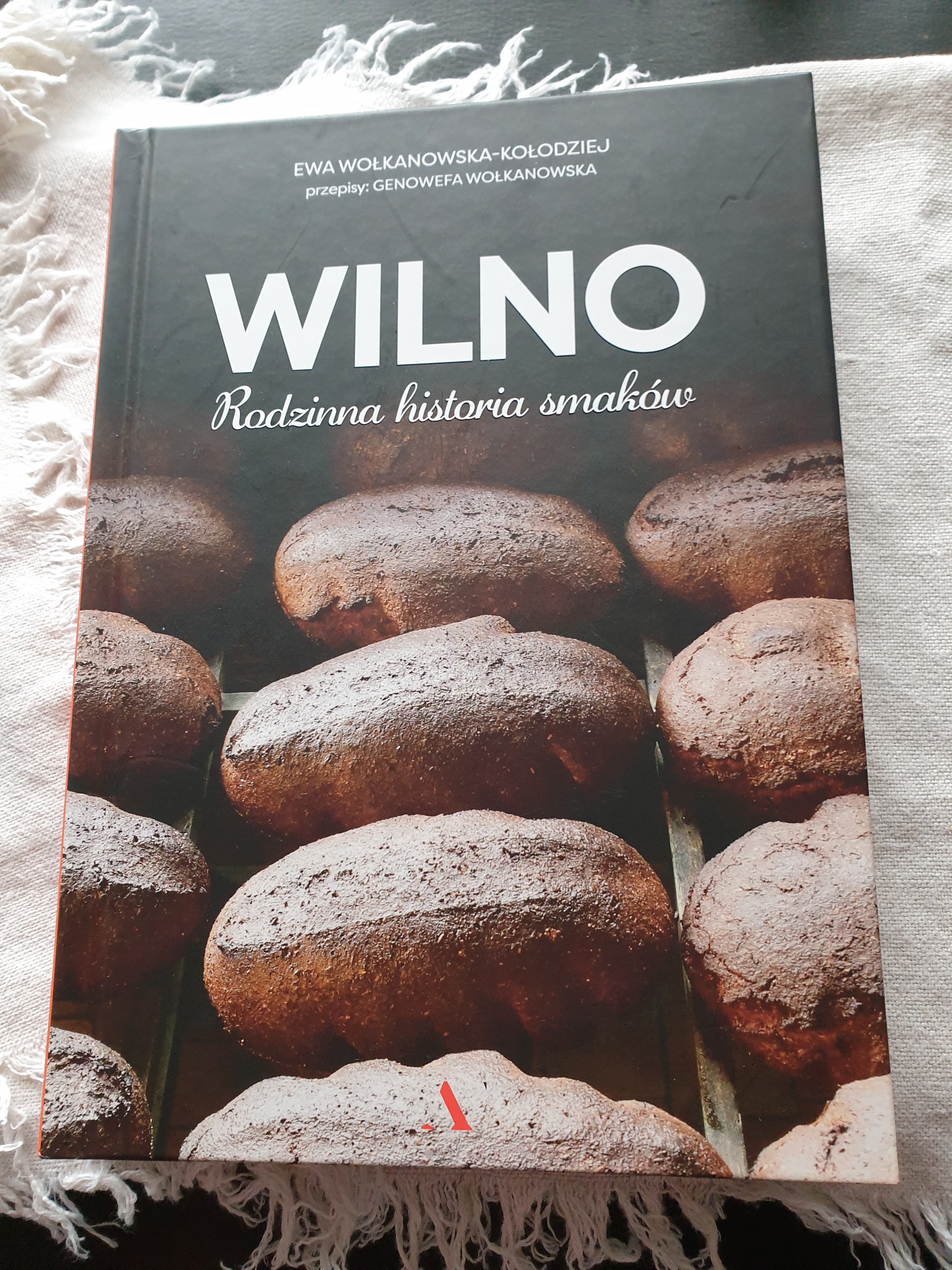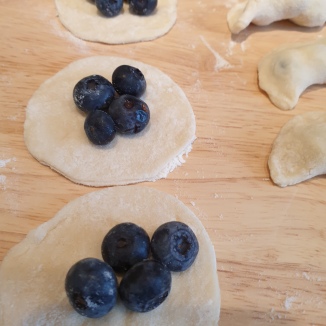- Pierogi are little semicircular parcels of pasta which are made with a multitude of fillings.
- I wrote a very large post about them over 4 years ago.
- Pierogi with sweet fillings are made in just the same way as savoury ones.
- Circles of dough have a filling placed on them. The dough is folded over and pinched to make a semi circle and these are boiled in slightly salted water.
- Once boiled, sweet pierogi are dredged with icing, granulated or caster sugar and are often served with soured cream. They are best eaten straight away.
- I must admit that when I was younger I did not really like sweet pierogi but now I think they are utterly delicious especially when served with soured cream.
Red Fruits
In the summer and early autumn in Poland, when all the fruits of the forests and the garden are ripe, that is when these pierogi are at their best. However bottled fruit is available all year round and I often make my sweet pierogi with these.
You can also use defrosted frozen fruit.
My favourite are:
- Morello(sour) Cherries – fresh ones are not usually available in England – I use bottled ones.
- Whinberries (bilberries) – these grew in Lancashire near my home and also could be bought in baskets imported from Poland. (I think the larger American Blueberry is nowhere near as tasty.)
- When we went to pick these I know this always made my mother think of her childhood in Poland.
Some of the other options are:
- Blackberries
- Blackcurrants
- Raspberries
- Strawberries
- *
- Depending on the size of the fruit, you need about 3 or 4 per circle.
- Do not add sugar to fresh fruit as this will make too much liquid and the pierogi will not seal.
- If using bottled fruit you need to strain as much juice away as possible.
- If using defrosted frozen fruit dab away any excess water.
- Drench the cooked pierogi in icing sugar and serve with sour cream. The sugar contrasts with tartness of the fruit.
Ingredients – Dough
- 250g pasta flour or plain flour & 2 tablespoons of fine semolina
- 150ml water
- 1 tablespoon oil – sunflower or light olive
- ½ teaspoon salt
- 1 egg yolk
Method – Dough
- In a jug or bowl mix together the water, oil and the yolk.
- Put the flour and salt into a large bowl and make a well in the centre.
- Pour in the liquid from the jug and initially use a knife to mix this into the flour and then use your hands to mix the liquid and flour to get a ball of dough.
- Turn this out onto a floured board and knead the dough for a few minutes until you have a smooth ball.
- Cover and leave to rest for about ½ an hour.
- *
- Cut the dough into half.
- Prepare a large tray and cover it with a clean cotton or linen tea towel and sprinkle this with flour.
- On a floured board roll out the dough a half at a time until you have a sheet of thinly rolled dough.
- Cut out circles using a 7 cm diameter cutter.
- The excess dough can be re-mixed and rolled out again.
- Depending on the fruit and size place 3 to 4 on each circle.
- Folded them over and pinch the edges together to make a good seal.
- You learn from experience how much filling to put in as too much will make it hard to seal them and if not properly sealed they will burst on boiling. Do not worry if you have a few mishaps – it still happens – even with experience – it is hard to salvage one that has gone wrong – just accept that there will be a few that you do not cook.
- Place the sealed pierogi on the prepared tray until they are all made, do not let then touch each other.
- *
- To cook the pierogi, use a large pan of boiling water to which you have added some salt and a drizzle of oil.
- Drop the pierogi in one by one and allow them to boil. I usually do about 6 to 7 at a time.
- As they cook they will float to the surface, let them boil for 2 minutes and then remove them with a slotted or perforated spoon and put into a colander above a pan for a few seconds to drain and serve.
- Continue boiling batches in the same water.
- If you want to make all the pierogi to serve together then you need to get some oven proof plates.
- Keep the plates warm in a low oven.
- As you take out the cooked pierogi add them to the plates, trying not to make them touch.
- Keep on adding more as they cook.
To Serve
Sprinkle with icing, granulated or caster sugar and some soured cream.
Pierogi with Sour Cherries
Served here on La prune by Jet for Ter Steege
Pierogi with Whinberries
Served on Royal Doulton – Carnation 1982 – 1998




